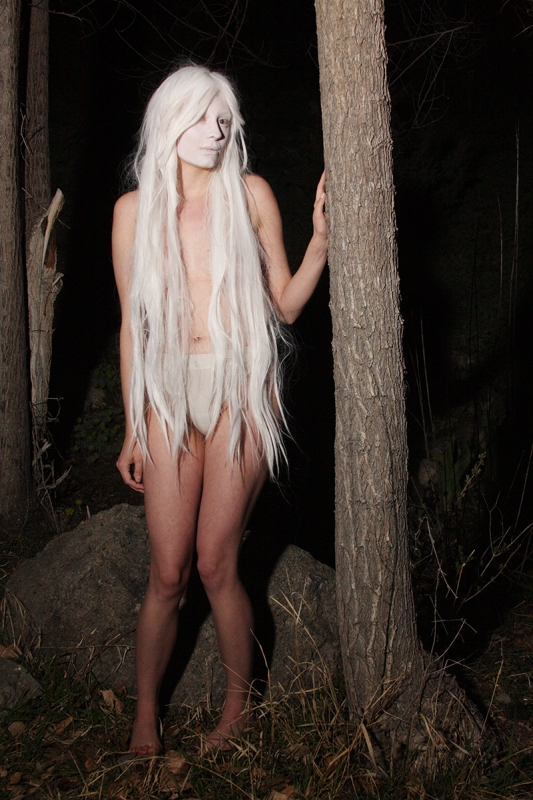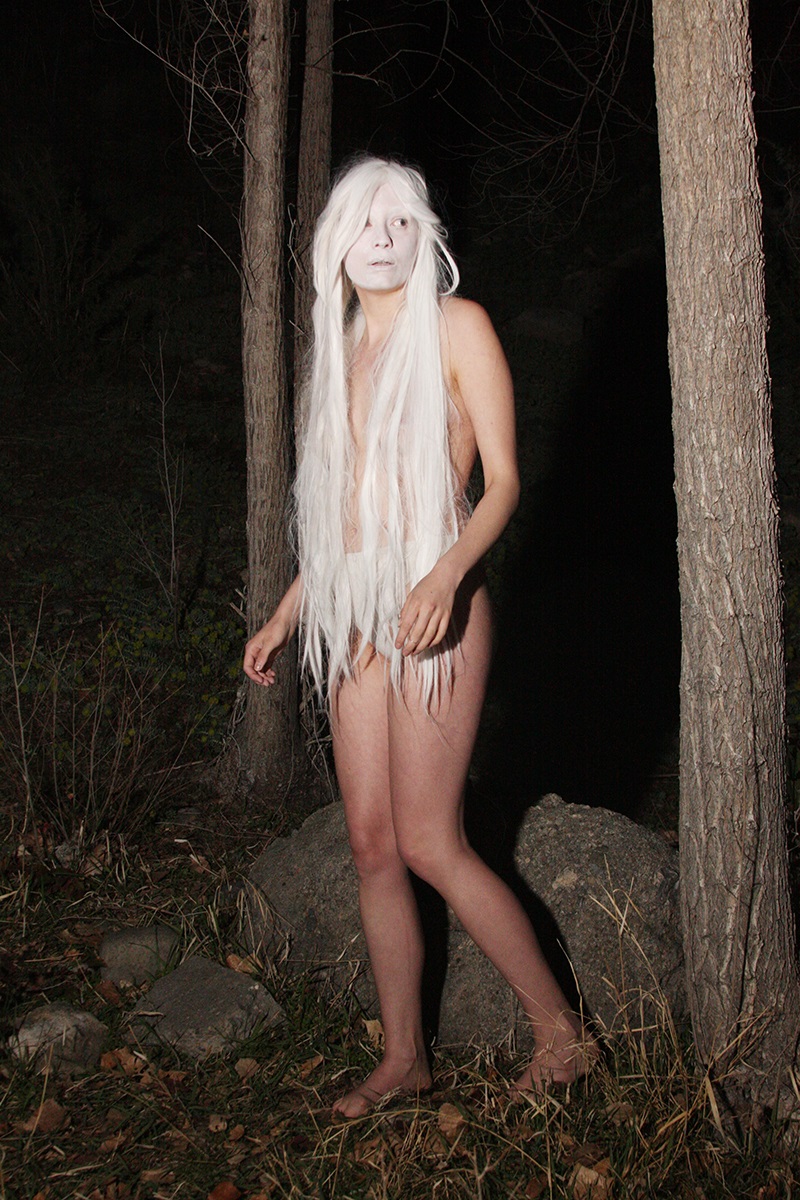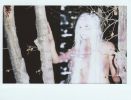Creature Feature: Arousalind
Art
Salt Lake’s Bad Kids Collective, born from Club Kid fever dreams, Internet-embellished lifestyles and queer performance attitudes, has galvanized Utah drag culture in recent years. The Bad Kids, part autonomous happenings of human bodies, part multi-media selfie installations, are cultivating a community of gender performance in Salt Lake where diverse expression reigns, where talent refers not to exclusive abilities, but rather to the courage to perform one’s artistic vision to completion. For them, every day is drag, every body a context to apply with costume, cosmetics and ontological anarchism.
Hannah Montgomery, who grew up in Salt Lake City, was introduced to the Bad Kids through her friend and Chalk Garden Co-op coworker Willard Cron. In the spring of 2013, Willard invited Montgomery to a performance by New York–based cabaret singer Joey Arias at Urban Lounge. In addition to Joey Arias’ gender-defying vocal performance, Willard performed as well, as part of a growing collective of genderqueer performance artists calling themselves the Bad Kids.
“I was blown away,” Montgomery says about seeing Bad Kids such as Willard and Klaus perform. “It was so fun.” Wanting to participate, but thinking that drag was a boys-only club, Montgomery took some good advice from Willard. “I was at work with Willard after [the show],” she says, “and I was like, ‘I wish I could do that—I’m so jealous.’
Guys get to dress up in drag as girls, and it just sounds so fun.” Montgomery’s fascination with gender wasn’t sparked by a single show, though. “I’ve always liked androgyny, so I was kind of fascinated with this idea of being a girl dressing up as a boy dressing up as a girl,” she says. Willard suggested that she buck gender stereotypes and just do it.

Montgomery says, “When I discovered drag, I just thought that was such a cool thing to do, to dress up as someone else.” Willard compared Montgomery to Rosalind, the gender-bending heroine from Shakespeare’s As You Like It. Then their coworker suggested a name—Arousalind. Thus, a name was born, and the character was soon to follow. A few months later, Arousalind took the stage for the first time, at the first annual Bad Kids pageant.
For her pageant performance, Montgomery debuted Arousalind as a fleshed-out character with a distinct visual look. “I did the all-white, classic Arousalind,” Montgomery says. “Her thing is all white—the long white wig, white makeup, very monochromatic and gender neutral, color neutral—very non-specific.” As a female, Montgomery doesn’t mask her identity through character—she embraces it. “It’s still kind of feminine, but toned down,” she says.
As a contrast to the ethereal, androgynous nature of Arousalind, Montgomery also embodies a persona called Lubia from time to time. “[Lubia’s] very classic drag-y queen-y—overdone, overly feminine, boobs sticking out, lots of makeup,” she says. “Arousalind is so neutral, and so Lubia is like the devil on the shoulder just wanting to pop out and be very obnoxious.”
Functioning as a send-up of the traditional male-dominated drag queen culture, Lubia, as well as Arousalind, elicit confusion and provoke all kinds of responses, onstage and off. As far as being an AFAB woman and performing is concerned, Montgomery says this: “It really doesn’t matter what my day-to-day gender is because, as Arousalind, I am what I’ve created. I could be a man doing that; I could be a 6-year-old child doing that; I could be whomever.”
Arousalind’s stage performances are typically born from a particular song, one “that I have a feeling for,” Montgomery says. While the Bad Kids are associated with a variety of social and political causes, Arousalind doesn’t always have an agenda when she performs. “The more I practice it, the more undone it becomes, somehow. A lot of my peers have a story or they’re political, and I think that’s really cool,” she says, “but I just feel like I’m a lot more abstract by default. I just appreciate a lot—having a way to be creative and to have somewhere to do it.”
In addition to solo performances, Arousalind has taken the stage with other Bad Kids in collaboration. “My favorite performances have been when I’ve collaborated with people,” Montgomery says. “There’s something really fun about interacting with someone else as a character, instead of as yourself—there’s this different dynamic.” Among the Bad Kids with whom Arousalind has shared a stage are ODGE and fellow “faux” queen Chartreuse. “Most people probably like to have their own thing played out, but I really enjoy being a part of someone else’s idea,” she says. “There’s something romantic about getting to be someone else, even if it’s just for a night.”
For Montgomery, performing can sometimes feel like nothing at all. “Once I get onstage, it happens so fast,” she says. “It’s almost like I wasn’t there for it. I’ll see a video for it and be like, ‘Oh, that’s what I did?’” Sometimes, performances are seemingly over in the blink of an eye for Montgomery. “It’s almost like I’m not in my body when I’m doing it,” she says.
Performing for people without inhibition also arouses memories of Montgomery’s childhood for her. She recalls how she would make her mother take her to big, open spaces, such as in Trolley Square, or have her move all the furniture in their living room, and she would just dance in the space. “That’s kind of how it felt the first time I performed, and now every time I perform,” she says. “I feel like I’m going back to that space when I was a kid and I would leap around and be taken over by a song.”
The key to keeping performances fun for performers and audiences alike is the Bad Kids’ all-inclusive, performance art approach to traditionally male-centric drag. “That’ll set an example: It has very little to do with your gender, and more so with a character that you’re portraying—you can have any type of chromosome or sexual characteristics,” Montgomery says.
“I was really lucky to always feel like I could be who I was,” Montgomery says, “regardless of what or who or how that was. I got to explore without any judgment. I would just wish that everybody, especially younger generations could feel that, that they can figure out how to be comfortable with themselves and how to explore that very openly. I hope younger kids can create who they are more freely and without fear.”
Arousalind will perform with ODGE on Friday, March 13 at Metro Bar for “Mystic.”












